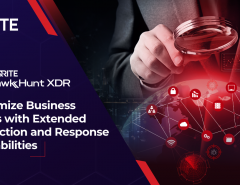With the advent of mobile devices and now, currently, the Internet of Things (IoT), mobility has become the buzzword in enterprises. It is not only about managing one physical network in a location – now employees have a range of mobile computing devices including mobiles, tablets and even smartwatches, all of which are used for work-related purposes. Hence, more and more enterprises understand the importance of an Enterprise Mobility Management (EMM).
Of course, before getting into any depth about EMM, it is also important to understand where MDM, which is Mobile Device Management, comes into the reckoning. MDM refers to administration and management of devices remotely. Nowadays though, MDM has become a subset of overall Enterprise Mobility Management (EMM). MDM operates at a device level whereas enterprises have now understood that the key to managing security of mobility devices is in the data. EMM hence refers to solutions, products and services that ensure the security of data and integrate with enterprise IT systems to meet corporate concerns.
Enterprise must seriously consider EMM solutions because they have some major benefits:
Better productivity
Thanks to EMM, employees can use key official applications on their own devices which allow them to carry out important work in a secure environment. A CEO can send across memos or his feedback to his colleagues from the airport on his phone or multiple teams can securely work on a cloud-based solution. This “anywhere required” feature can really improve overall productivity of an organization.
Increased Efficiency
Mobility leads to greater efficiency in the functioning of an organization. The freedom to work without constraints and on-the-go allows for faster work to be conducted and is hence more efficient. For enterprises which employ sales executives on the field, they can quickly provide field reports and customer insights allowing for better work.
Increased savings
Efficient enterprise mobility management allows enterprises savings on device-related costs. This results in overall increased revenue without any risk of drop of employee morale.
Any enterprise which considers investing in an EMM solution however must ensure that it ticks the following boxes:
- Mobile Device Management – MDM remains an integral aspect of EMM. Device management is still required because devices can often get lost, corrupted or stolen. Enterprises must have the feature to wipe data on these devices, reset and mobile software management.
- Remote Monitoring – Enterprises require the ability to monitor apps and data remotely. The IT department must have the ability to remotely wipe data or remotely find device. The ability to run integrated checks on registered devices to report and enforce policy compliance is especially important
- Mobile Application Management (MAM) – A good EMM solution should allow and support over-the-air installation, update and removal of public enterprise applications. It is also important to ensure that these apps are running in a secure environment or updated when required, i.e. an iOS update is pushed out when it is required.
- Mobile Content Management (MCM) – Business data loss and leakage can be tackled by Mobile Content Management (MCM) solutions which allow a secure data container which is authenticated and encrypted for tools to update and access business files. These containers can be linked to SharePoint or the enterprise cloud.
The percentage of mobile-only users is increasing every year and is quickly surpassing desktop users. An Enterprise Mobility Management solution is a move which most organizations will have to make as soon as possible and one which will have long-term consequences. It is important that enterprises start doing their due diligence and research about an EMM solution that fits their nature of business.
As an IT security partner for your business, Seqrite provides comprehensive security from advanced cyber threats. To know more




